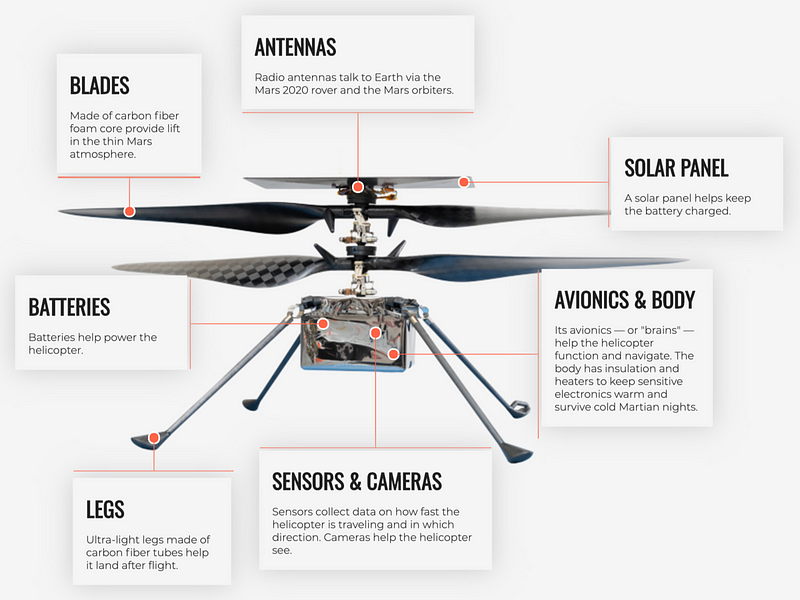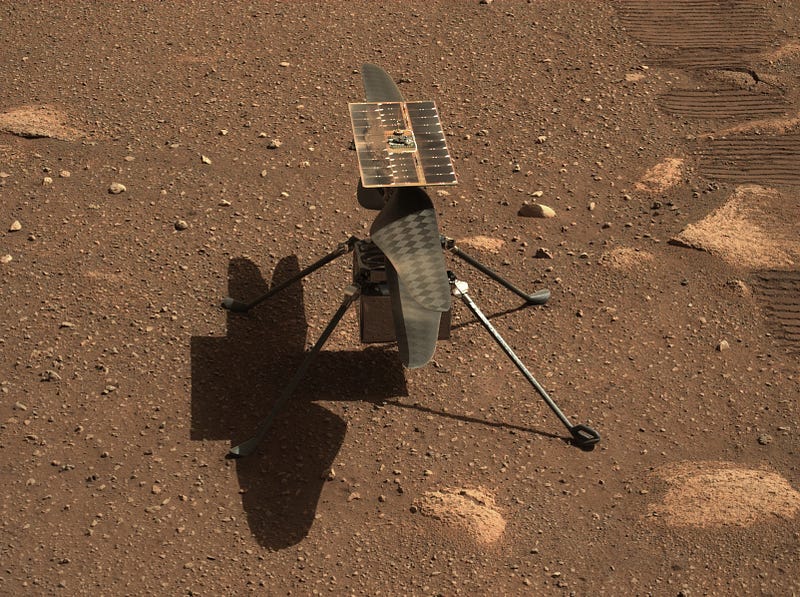Revolutionizing Mars Sample Return: Helicopters to the Rescue
Written on
Chapter 1: Introduction to Mars Sample Return Mission
The Mars Sample Return mission, aimed at bringing Martian soil samples gathered by the Perseverance rover back to Earth, has recently undergone a significant transformation. Instead of relying solely on a rover to retrieve samples, this innovative approach involves two helicopters akin to the successful Ingenuity helicopter, which has already demonstrated its capabilities on Mars. These helicopters will ferry the samples to a designated launch site on the Martian surface, marking this as one of the most intricate robotic missions in the annals of space exploration.

Chapter 2: Collaboration and Challenges
The European Space Agency (ESA) was originally set to develop a specialized rover to assist in collecting samples from the Perseverance rover, facilitating their transfer to a rocket. Once in orbit, a spacecraft would be tasked with bringing them back to Earth, where they would descend to the surface in a specialized capsule. However, the withdrawal of Russia from the Mars Sample Return initiative has led to complications. ESA had planned for collaboration with Roskosmos, the Russian space agency, but the ongoing conflict in Ukraine and subsequent sanctions forced ESA to suspend all partnerships with Roskosmos, disrupting the initial plans for the mission.
NASA, however, has a contingency in place. With the fetch rover's construction no longer feasible, the agency has opted for Perseverance to directly deliver the samples to the Mars Ascent Vehicle (MAV) launch station. Yet, there are concerns that by the time MAV is operational, Perseverance may be incapacitated, possibly becoming trapped or malfunctioning, as noted by Artur Chmielewski from NASA's Jet Propulsion Laboratory.

Chapter 3: The Role of Helicopters in Sample Collection
To address these challenges, NASA plans to deploy two mini helicopters, designed similarly to the Ingenuity model. These helicopters will be equipped with simple manipulators capable of grasping samples and transporting them to designated locations. A lander is scheduled to launch from Earth in 2028, which will deliver the MAV and the two helicopters to Mars. This mission echoes the Perseverance landing in 2021, which marked the first deployment of an extraterrestrial helicopter.
The new helicopters will weigh slightly more than Ingenuity and feature wheels for traversing the Martian terrain. Their primary innovation will be the addition of a manipulator arm designed to securely hold sample containers.

Chapter 4: Data Collection and Future Prospects
NASA is also considering further capabilities for the helicopters beyond just transporting samples. Discussions are underway with scientists to determine which research instruments should be added, aiming to gather scientifically valuable data during the mission. While weight is a critical factor—since the helicopters need to remain lightweight for transport—the team is committed to ensuring that any additional equipment remains as minimal as possible.
This mission presents a substantial engineering challenge, particularly due to the need for interaction among multiple robotic systems on another planet, without real-time control. If successful, the orbiter carrying the Martian samples is projected to return to Earth by 2033, with a landing planned in the Utah desert.
The first video, Mars Sample Return Blues - Setbacks, Innovations, and the Search for Life With Leonard David, delves into the challenges and advancements associated with the Mars Sample Return initiative.
The second video, Bringing Mars Samples Back to Earth (Exploring Space Lecture), explores the intricacies of retrieving Martian samples and the technology involved in this groundbreaking mission.
Conclusion: The Future of Mars Exploration
The ongoing developments in the Mars Sample Return mission signal a new era in space exploration, showcasing the resilience and adaptability of NASA in overcoming obstacles.
Cool that you made it to the end of this article. I will be very pleased if you appreciate the effort of creating it and leave some claps here, or maybe even start following me. Thank you!